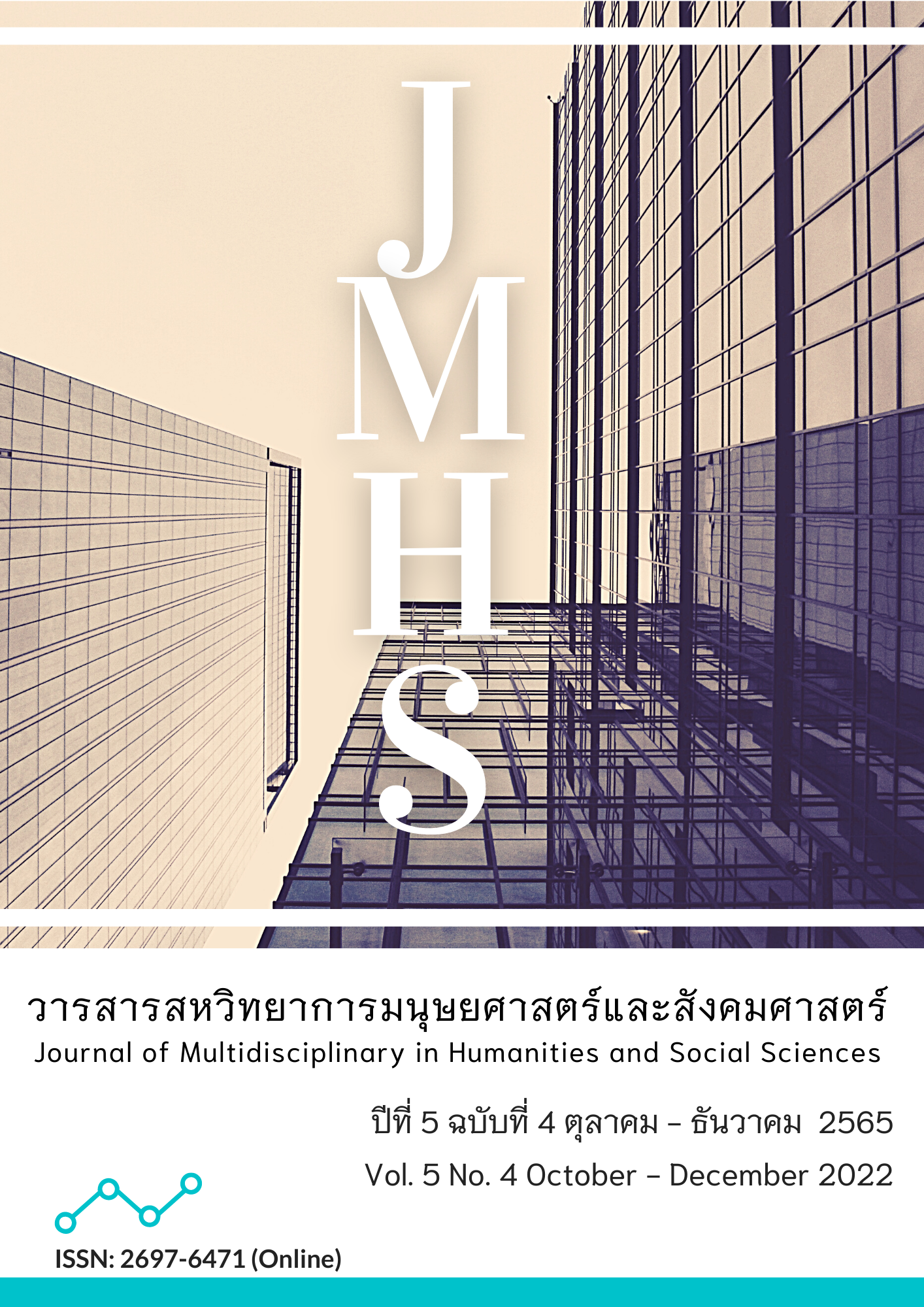Thaksinawat: Art Therapy in Buddhism
Main Article Content
Abstract
“Thaksinawat” is another work in the Thai-Indian arts and culture exchange program. This work was created and displayed in an art exhibition in India. This time, a group of Thai artists had a field trip to visit the Indian traditions and culture. The writer has seen many things, such as stories of things, philosophies, and ways of life there as well as stories of Buddhism in India. Although it is not as prosperous as it was in the past, but still reflects the roots of Buddhism in many areas. Indians still respect Buddhism, even though today it is not a spiritual refuge.
This work of art brings the essence and purpose of walking meditation or making "Thaksinawat" to present in the writer’s style. This way is a practice of mindfulness and awareness by focusing on one's body while each step is taken. Determine the sense of touch. How do feet touch the ground. How your feet feel when stepping on the surface, how your legs lift, which parts of your body are working. Pay attention to how you feel about your body. Be aware of what is happening to the body and mind at that moment in order to practice mindfulness and train the body to know when it is conscious. Then it becomes a concentration or meditation exercise. When one enters meditation, wisdom arises. With this thought, it has become a concept to define the shape of art in 3 parts: mindfulness, concentration, and wisdom.
Article Details

This work is licensed under a Creative Commons Attribution-NonCommercial-NoDerivatives 4.0 International License.
Views and opinions appearing in the Journal it is the responsibility of the author of the article, and does not constitute the view and responsibility of the editorial team.
References
คูณ โทขันธ์. (2548). การพัฒนาจิต. กรุงเทพฯ: โอเดียนสโตร์.
ชลูด นิ่มเสมอ. (2531). องค์ประกอบของศิลปะ: Composition of Art. กรุงเทพฯ: ไทยวัฒนาพานิช.
ประเสริฐ ศีลรัตนา. (2542). สุนทรียะทางทัศนศิลป์. กรุงเทพ: โอเดียนสโตร์.
พระครูสุนทรธรรมนิทัศน์ และ รวีโรจน์ ศรีคำภา. (2564). สมดุลชีวิต. วารสารธรรมวัตร, 2(2), 29-37.
พระธรรมปิฎก. (ป.อ. ปยุตฺโต). (2556). การพัฒนาที่ยั่งยืน. (พิมพ์ครั้งที่ 13). กรุงเทพฯ: มูลนิธิโกมลคีมทอง.
พระพรหมคุณาภรณ์ (ป.อ.ปยุตฺโต). (2552). พจนานุกรมพุทธศาสตร์ ฉบับประมวลศัพท์. (พิมพ์ครั้งที่ 12). กรุงเทพฯ: จันทร์เพ็ญ.
มหาจุฬาลงกรณราชวิทยาลัย. (2539). พระไตรปิฎกภาษาไทย ฉบับมหาจุฬาลงกรณราชวิทยาลัย. กรุงเทพฯ: มหาจุฬาลงกรณราชวิทยาลัย
วรรณิภา ณ สงขลา. (2532). จิตรกรรมไทยประเพณี: เทคนิคและการอนุรักษ์. ศิลปากร, 33(5), 4-22.
วิชัย สิทธิรัตน์. (2550). ประติมากรรม: บูชาครู. กรุงเทพฯ: อมรินทร์พรินท์ติ้ง.
ศิลป์ พีระศรี. (2502). คุณค่าของจิตรกรรมฝาผนัง. พระนคร: กรมศิลปากร.
สำนักงานพระพุทธศาสนาแห่งชาติ. (ม.ป.ป.). วิธีปฏิบัติวิปัสสนากัมมัฏฐานตามหลักสติปัฏฐาน 4. สืบค้นเมื่อ 15 พฤษภาคม 2565, จาก https://onab.go.th/th/content/category/detail/id/82/iid/4104
Art Centre, Silpakorn University. (2006). Thai-India Art and Cultural Exhibition Exchange 2005-2006. by Thai artists from Silpakorn University and Indian artists from Visva Bharati University (Santiniketan). Bangkok: Art Centre, Silpakorn University.
De Oliveira, N., Oxley, N., & Petry, M. (2003). Installation Art in the New Millennium: The Empire of the Senses. London: Thame & Hudson, Ltd.


